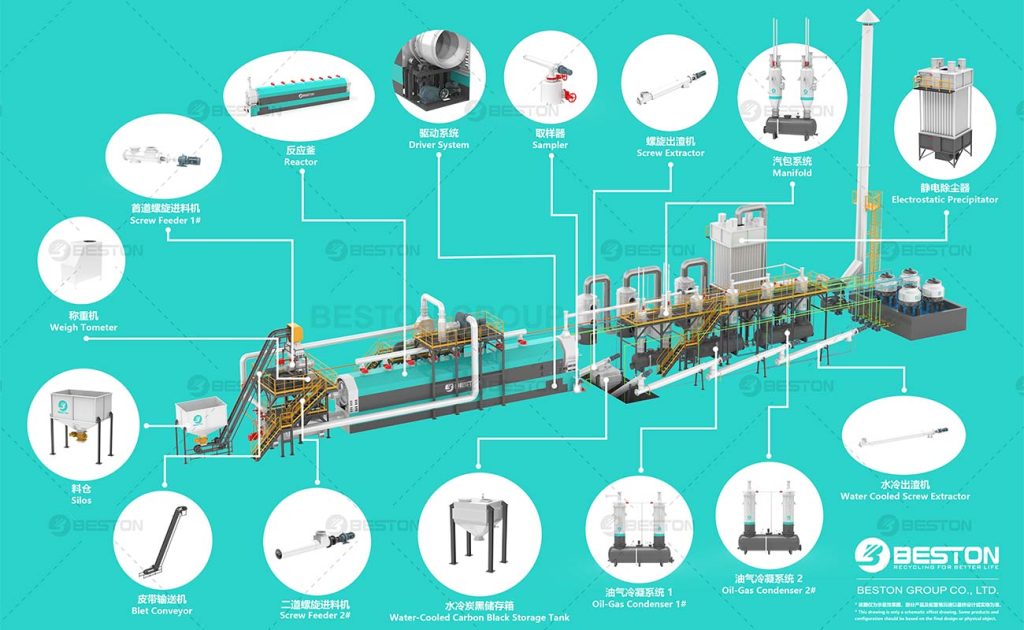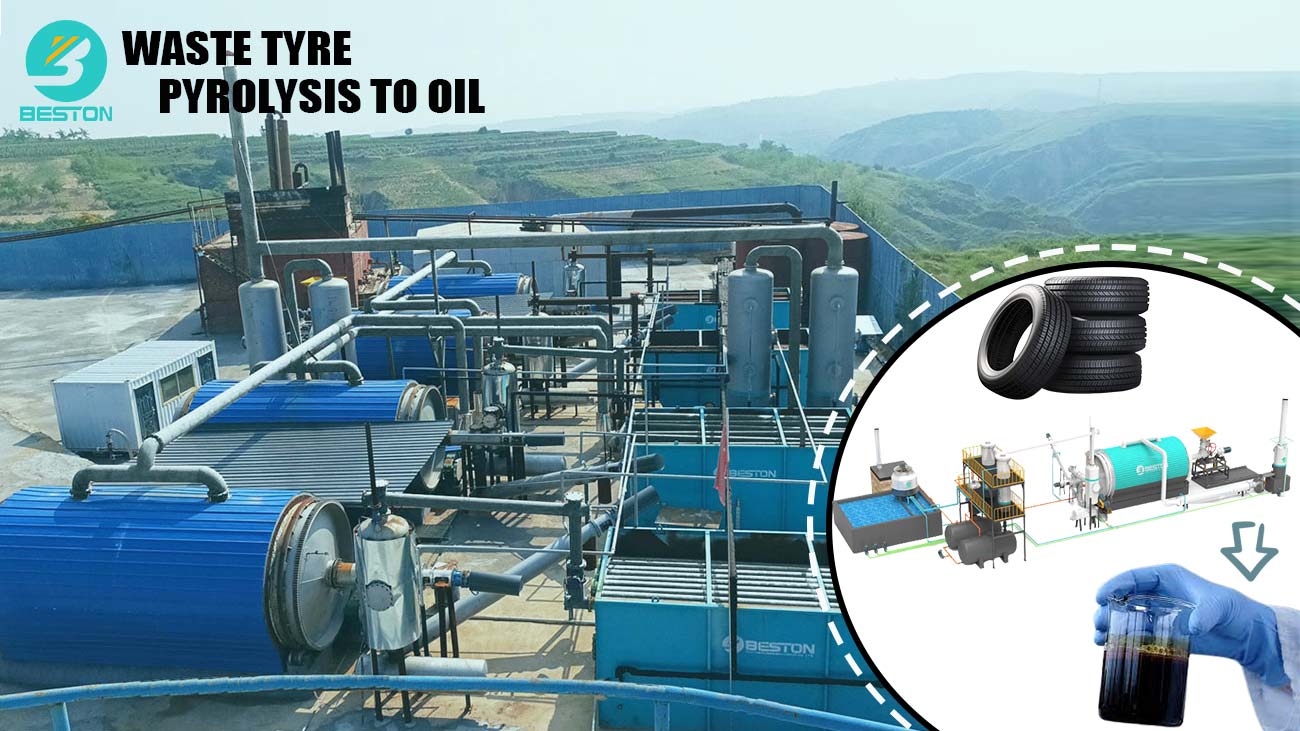The paradigm shift towards sustainable practices in the contemporary industrial landscape has spurred the exploration of alternative avenues for waste management. The pyrolysis plant emerges as a beacon in this endeavor, paving the way for the production of pyrolysis oil—a dynamic and invaluable resource within the framework of the circular economy.
I. Unveiling the Pyrolysis Plant
A. Pyrolysis Plant Definition and Function
At its core, a pyrolysis plant is an innovative facility designed to harness the transformative power of heat in the absence of oxygen. This controlled thermal decomposition process breathes new life into various organic materials, giving rise to an array of valuable outputs, with pyrolysis oil occupying a prominent position.
B. Operational Symphony of a Pyrolysis Plant
The intricate ballet within a pyrolysis plant involves subjecting diverse feedstocks, ranging from biomass to plastics, to elevated temperatures. This orchestrated dance leads to the production of pyrolysis oil, a liquid gold with multifaceted applications.
II. Pyrolysis Oil: Liquid Gold of Sustainability
A. Chemical Composition and Properties
Pyrolysis oil, also known as bio-oil, is a complex mixture comprising hydrocarbons, oxygenated compounds, and other chemical entities. Its unique chemical fingerprint grants it versatility, making it a potential substitute for conventional fuels.
B. Versatile Applications in the Circular Economy
- Energy Source: The combustion of pyrolysis oil generates heat and power, providing a sustainable energy source. This aligns with the circular economy ethos by repurposing waste into a valuable energy contributor.
- Chemical Feedstock: The chemical richness of pyrolysis oil positions it as a viable feedstock for the synthesis of chemicals and bio-based materials. This dual role adds layers to its significance in the circular economy.
- Bio-Based Products: Through innovative tire/plastic pyrolysis process, pyrolysis oil can be further refined to yield bio-based products, contributing to the creation of a closed-loop system where waste becomes the raw material for new products.
III. Key Considerations in the Pyrolysis Oil Production
A. Optimizing Feedstock Selection
The quality of pyrolysis oil is intricately linked to the nature of the feedstock. The pyrolysis plant must be adept at accommodating diverse materials, ensuring a broad spectrum of feedstocks without compromising the integrity of the final product.
B. Temperature and Residence Time Dynamics
The delicacy of the pyrolysis process lies in the calibration of temperature and residence time. Fine-tuning these parameters ensures the efficient conversion of feedstock into high-quality pyrolysis oil while minimizing undesirable byproducts.
C. Catalytic Influence on Pyrolysis Oil Yield
The incorporation of catalysts introduces a catalytic synergy, influencing the yield and composition of pyrolysis oil. Catalysts act as molecular architects, guiding the transformation process towards desirable chemical pathways.

IV. Navigating Challenges and Seizing Opportunities
A. Economic Viability of Pyrolysis Oil
A critical facet of integrating pyrolysis oil from tyre/plastic oil machine into the circular economy is its economic viability. Life cycle assessments, encompassing the entire journey from feedstock acquisition to byproduct utilization, guide stakeholders in gauging the sustainability and profitability of the venture.
B. Overcoming Technological Hurdles
Technological advancements are the linchpin for optimizing pyrolysis plant efficiency. Research endeavors focus on overcoming technological hurdles, such as improving heat transfer mechanisms and developing more effective catalysts, to elevate the yield and quality of pyrolysis oil.

V. Environmental Stewardship through Pyrolysis Oil
A. Mitigating Emissions Through Pyrolysis
The pyrolysis plant, in its pursuit of pyrolysis oil from plastic/tyre oil plant, champions environmental stewardship. By diverting organic waste from traditional disposal methods, it not only mitigates harmful emissions but also transforms waste into a valuable resource.
B. Carbon Sequestration Potential of Biochar
The byproduct of pyrolysis, biochar, possesses carbon sequestration potential. When integrated into agricultural practices, biochar enriches soil health while sequestering carbon—a pivotal element in the fight against climate change.